Communication is the cornerstone of social care and family assessment work — more than essential, it shapes every interaction, decision and relationship. In a field where practitioners are supporting parents in crisis and safeguarding vulnerable children, the ability to communicate with empathy and clarity is what allows trust to form and meaningful change to happen.
Tensions can run high — between professionals, with parents, and sometimes even within ourselves. In these moments, clear and compassionate communication becomes a vital tool.
But how do we express concerns, set boundaries, or give feedback in a way that’s honest without being hurtful? How do we stay open when emotions rise? This is where Nonviolent Communication (NVC) comes in: a practical and powerful framework for connecting with others through empathy, clarity, and mutual respect.
Developed by psychologist Marshall Rosenberg, NVC offers a simple yet powerful framework for navigating difficult conversations. It’s widely used in conflict resolution, education, healthcare — and increasingly, in social work settings where trust and clarity are key.
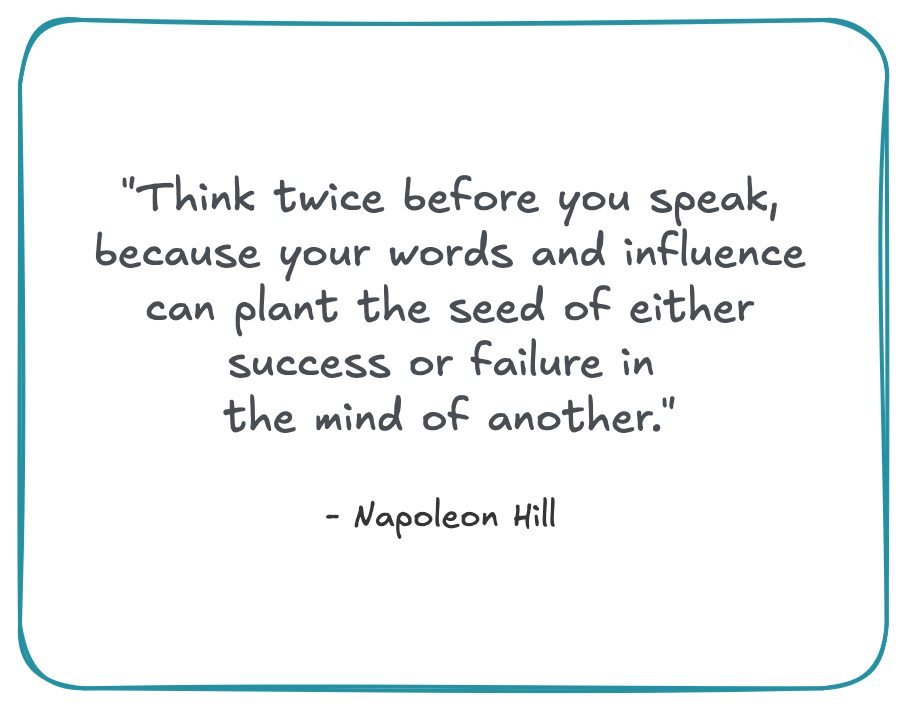
In this article, we’ll explore what NVC is, how to use it in everyday practice, and why it could make a meaningful difference when working with families or managing teams in assessment services.
What Is Nonviolent Communication?
Nonviolent Communication (NVC) is a communication method based on the idea that all human beings have the capacity for compassion. It focuses on expressing oneself authentically and listening empathetically, even when the subject is challenging or emotional.
Rather than labelling, judging, blaming or shaming (which Rosenberg called forms of “life-alienating communication”), NVC helps people express what they observe, how they feel, what they need, and what they’d like to request (Bailey, 2009).
This style of communication can support practitioners in working more compassionately with parents, especially those under stress or scrutiny.
The Four Components of Nonviolent Communication
Marshall Rosenberg’s Nonviolent Communication framework is built on four core components:
Observation Describe what you see or hear without evaluating or interpreting. Observations should be objective and specific—focused on facts rather than opinions or assumptions. Example: Instead of “You’re always late,” say “You arrived 15 minutes after the scheduled session time.”

Feelings Identify and express your emotions clearly. Avoid words that describe what you think others are doing to you (e.g. “ignored,” “abandoned”) and focus on genuine emotional states. Example: “I feel frustrated” or “I feel anxious.”
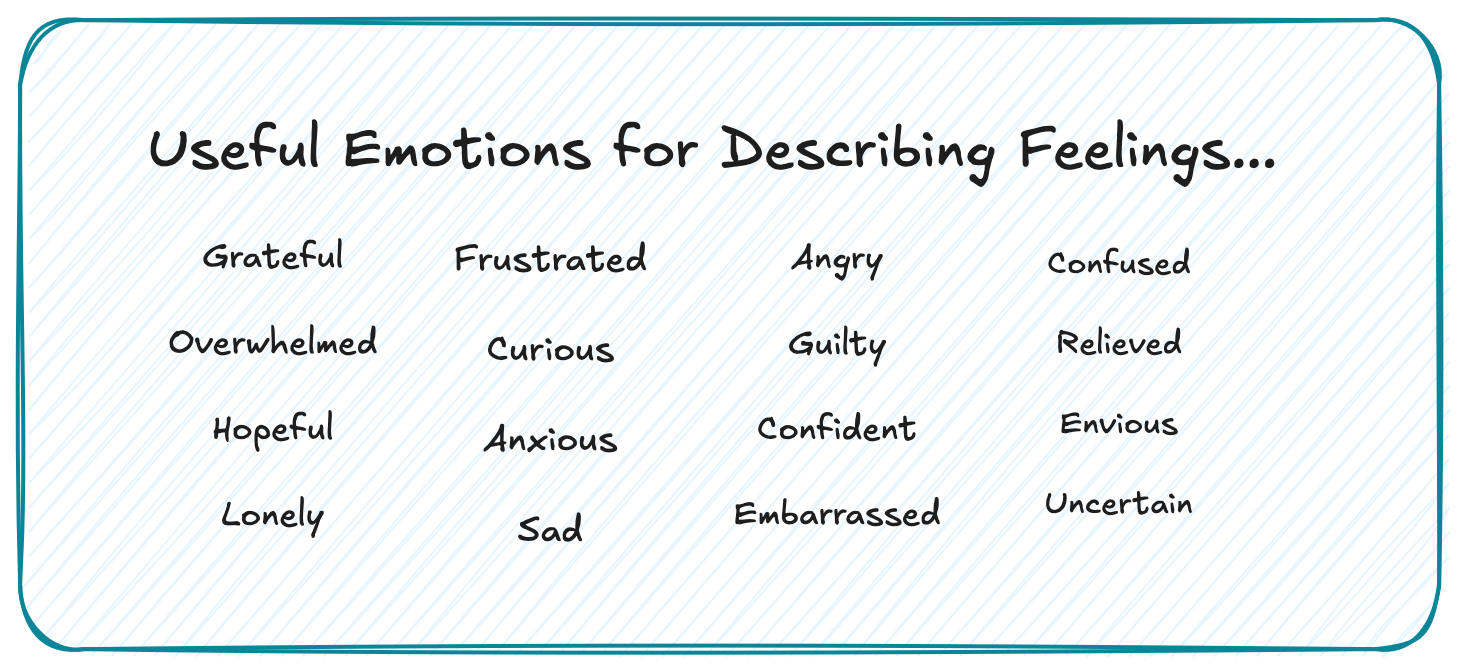
Needs These are the universal human needs behind our feelings. Every feeling points to a need that is being met or unmet. Recognising these helps shift the conversation from blame to understanding. Example: “I feel frustrated because I need reliability.”
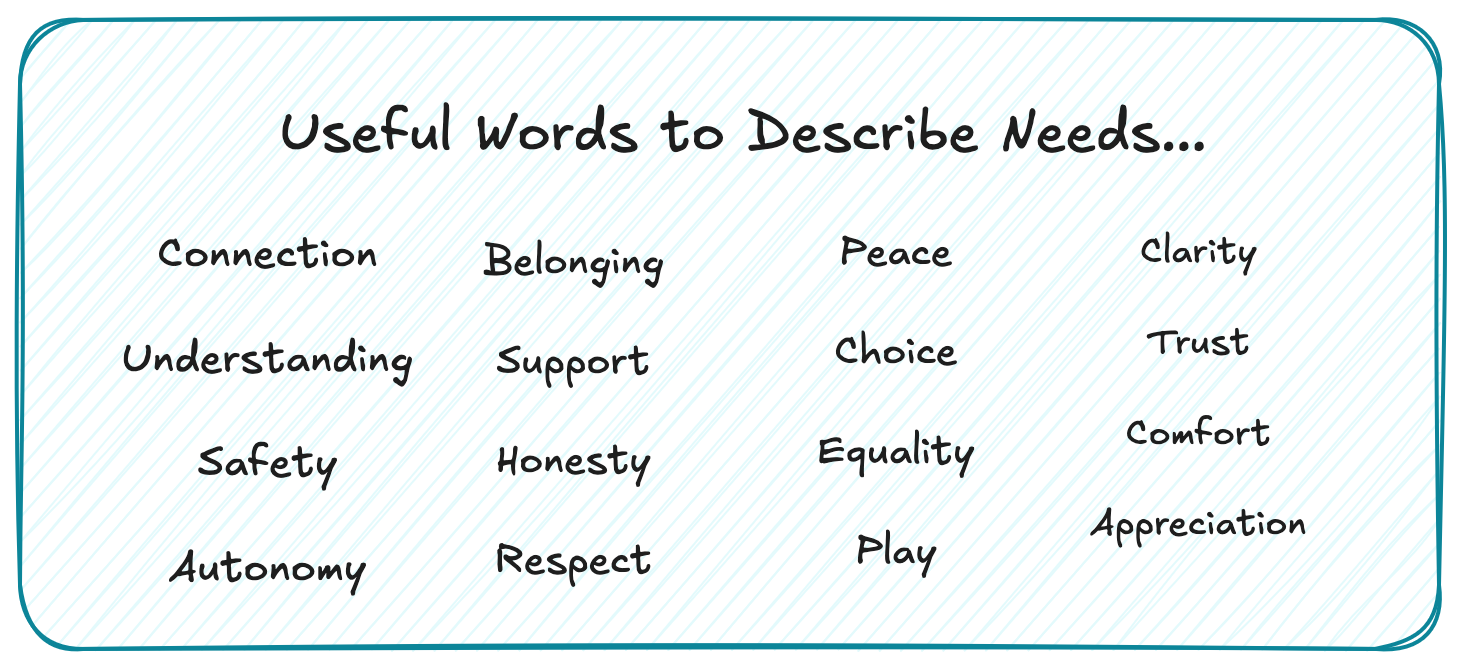
Requests Make clear, actionable, and respectful requests based on what would enrich life for both parties. Requests should not be demands—there should be room for “no.” Example: “Would you be willing to let me know if you’re running late next time?”

These steps help slow down reactive communication and build connection. In high-stakes family settings, where misunderstanding can have big consequences, this kind of clarity is invaluable (Rosenberg & Chopra, 2015).
How to Practise NVC: Step-by-Step
Practising NVC takes time, especially when emotions are high, but it becomes easier with awareness and repetition. Here’s a simple way to get started:
Pause and Observe
- Notice what’s actually happening, without judgment.
- Stick to the facts: What did the person say or do? What did you see or hear?
Identify Your Feelings
- Tune in to your emotional state. What are you feeling in that moment?
- Avoid thoughts disguised as feelings (e.g., “I feel betrayed” is more a judgment — the real feeling might be hurt, disappointed, or angry).
Name the Need Behind the Feeling
- Ask yourself: What need is (or isn’t) being met?
- Needs could include safety, connection, respect, cooperation, etc.
Make a Clear, Respectful Request
- Ask for something specific and doable, not vague or emotionally loaded.
- Avoid demands. If the answer is “no,” keep the dialogue open.
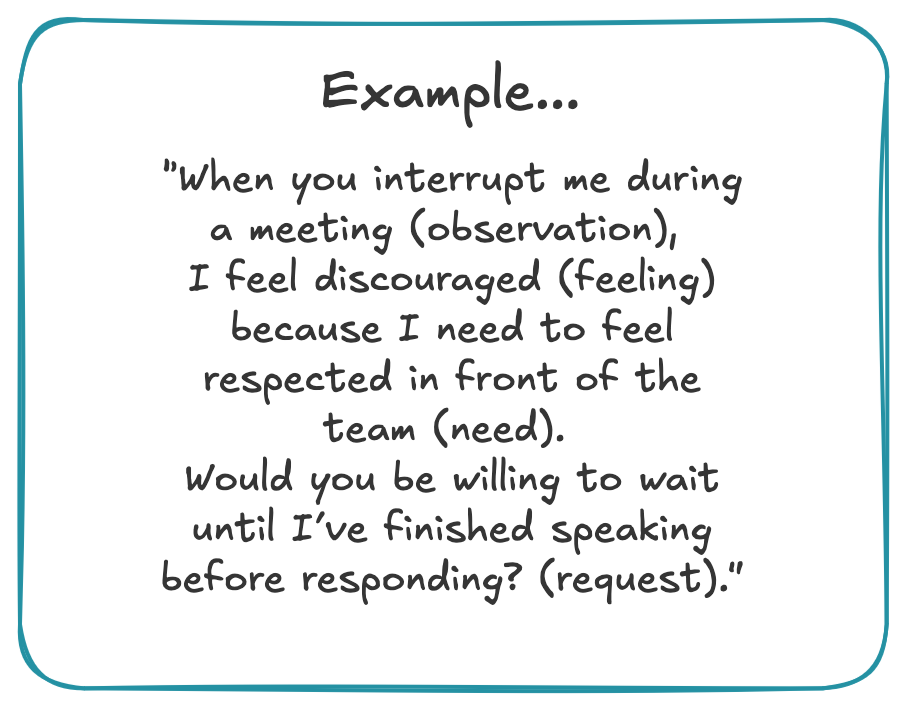
Using NVC with Families
Family assessment centres often work with parents in crisis, under observation, or facing difficult circumstances. In this context, how we communicate matters deeply.
NVC offers a way to approach conversations with parents that fosters dignity, reduces shame, and promotes understanding — even when delivering hard truths.

Practical ways to apply NVC with families:
- During Observations and Feedback: Instead of evaluative language (e.g. “You didn’t respond well”), describe what happened, how it affected the child or situation, and make a respectful request. Example: “I noticed the bedtime routine was delayed by 30 minutes last night (observation). I feel concerned (feeling) because consistent routines help children feel secure (need). Would you be willing to try the agreed routine tomorrow? (request).”
- When a Parent Misses an Appointment or Struggles: Share your feelings and needs while inviting collaboration rather than compliance. Example: “When you missed the last visit (observation), I felt worried (feeling) because I need to ensure we’re working together for your child’s wellbeing (need). Could we reschedule to continue supporting you? (request).”
- With Children and Teenagers: Adapt NVC language to name feelings and needs simply. This models emotional awareness and can create calmer, more connected interactions. Example with a child: “I see you’re upset (observation). Are you feeling sad because you want to play more? (feeling + need) How can I help? (request)”
- Reducing Escalation: Because NVC avoids blame and focuses on unmet needs, it’s useful when tensions rise. It allows staff to step back from power struggles and focus on shared understanding.
NVC doesn’t mean avoiding boundaries, but expressing them to preserve connection and dignity. For example, saying, “We want to support your success” can feel very different from, “You’re not meeting expectations.”

Using NVC Between Staff and Teams
The benefits of NVC don’t stop with families. Working in assessment centres can be emotionally demanding, and team dynamics greatly affect how supported staff feel.
Using NVC within teams can:
- Make staff supervisions spaces for honest but non-judgmental feedback.
- Help address conflict or miscommunication with empathy and structure.
- Improve morale and wellbeing by naming and respecting needs.
Whether you're a support worker, manager, or social worker, these tools can reduce misunderstandings and foster a more collaborative culture.

Does Nonviolent Communication Really Work?
There’s a growing body of research showing that Nonviolent Communication can improve emotional wellbeing, empathy, and connection.
Better communication in high-stress settings
A 2024 scoping review explored how NVC is used by healthcare professionals. The results showed that NVC training improved communication, reduced conflict, and helped prevent workplace bullying. The researchers concluded that NVC helps create emotionally safer, more respectful work environments.
Building empathy and cultural sensitivity
Tikhomirova & Shadrova (2020) studied the impact of NVC on social work students aged 18–21. They found that when NVC was integrated into teacher–student interactions, students became more open, culturally sensitive, and better at resolving conflict.
Communicating with empathy
In his book Nonviolent Communication: A Language of Life, Rosenberg (2015) explains how much of our everyday communication is rooted in blame or defensiveness. NVC instead encourages presence, empathy, and clear self-expression, which can reduce misunderstandings and build mutual respect — even in high-conflict situations.
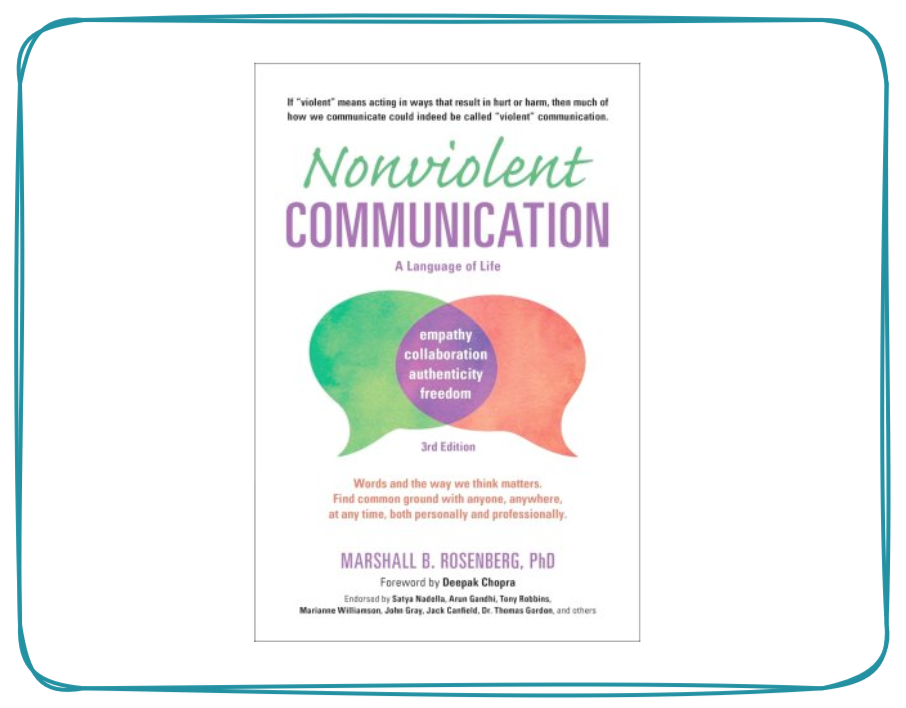
Together, these studies back up what many practitioners already know: communication rooted in empathy and honesty can transform even the most difficult conversations.
Learning to Have Hard Conversations
It's a great concept in theory—but in practice, it’s much harder than it sounds.
For most of my life, I’ve avoided difficult conversations. I’ve always been more passive, worried about hurting people’s feelings and feeling uncomfortable with confrontation. I’m a very empathetic person, which might be part of it. Or maybe it’s cultural, my English upbringing, or perhaps being a woman in spaces where directness isn’t always welcomed. Either way, I spent a long time prioritising harmony over honesty.
It’s gotten easier as I’ve gotten older. Studying yogic philosophy has helped, authenticity is deeply important in that practice and I’ve found myself trying to speak more honestly, even when it’s uncomfortable. But it’s still a work in progress.
Working at a family assessment centre really put my communication to the test. I had to have challenging conversations regularly; offering feedback to parents, confronting concerns, setting boundaries, all while trying not to harm our relationship or discourage them. That constant balancing act pushed me to grow.
It was actually a classmate who first introduced me to Nonviolent Communication, recommending one of Marshall Rosenberg’s YouTube videos. I was hooked. I started using the technique at work and quickly noticed the difference. I even found myself sharing it with friends and family. It gave me a way to be honest without being harsh and to listen without losing myself in someone else’s emotions.

Final Thoughts
Nonviolent Communication can be transformative — not just in conflict, but in everyday conversations. It helps build a culture where everyone’s needs matter and where honest dialogue leads to greater understanding, not deeper divides.
For professionals working with families under pressure, these skills are more than helpful — they’re essential.
Want to see it in action? This video of Marshall Rosenberg is a great place to start. It’s quite long, but I found it much more manageable when I watched it in half-hour chunks — and honestly, it completely changed how I communicate, both professionally and personally.
As you can see from the picture below he's a character, so it's unlikely that you'll get bored!

Sources
- Adriani, P. A., Hino, P., Taminato, M., Okuno, M. F. P., Santos, O. V., & Fernandes, H. (2024). Non-violent communication as a technology in interpersonal relationships in health work: A scoping review. BMC Health Services Research, 24(1). https://doi.org/10.1186/s12913-024-10753-2
- Bailey, D. (2009, September 4). A complete guide to using nonviolent communication at work. https://www.dave-bailey.com/. Retrieved July 31, 2025, from https://www.dave-bailey.com/blog/nonviolent-communication
- BayNVC. (n.d.). The basics of Nonviolent Communication. https://baynvc.org/basics-of-nonviolent-communication/
- Center for Nonviolent Communication. (n.d.). The four-part Nonviolent Communication process. https://nonviolentcommunication.com/wp-content/uploads/2021/11/4part_nvc_process.pdf
- PositivePsychology.com. (2020). Nonviolent communication: A language of life. https://positivepsychology.com/non-violent-communication/
- Rosenberg, M. B., & Chopra, D. (2015). Nonviolent communication: A language of life – Life-changing tools for healthy relationships (3rd ed.). PuddleDancer Press.
- Tikhomirova, E. L., & Shadrova, E. V. (2020). Developing interethnic tolerance of social work students by Non-Violent Communication. The European Proceedings of Social & Behavioural Sciences, 476–483. https://doi.org/10.15405/epsbs.2020.08.02.62
- YouTube. (n.d.). Marshall Rosenberg – Nonviolent Communication workshop [Video]. YouTube. https://www.youtube.com/watch?v=l7TONauJGfc




